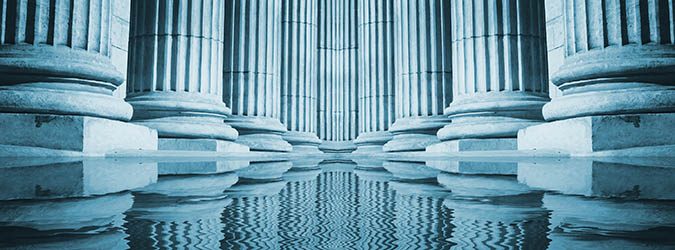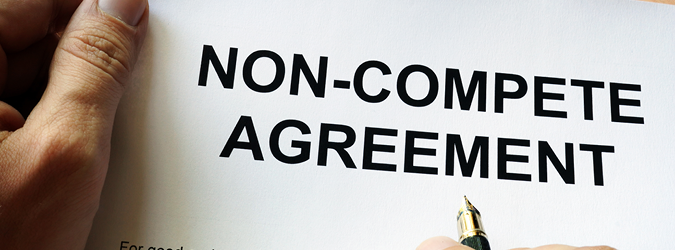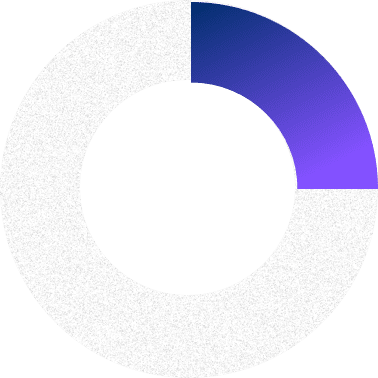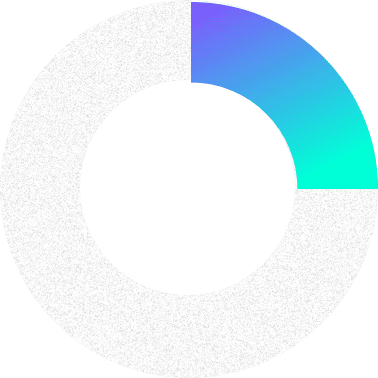Uncharted Legal Waters: Trade Secrets Litigation in State Court
3.24.2025

In May 2022, a jury in Virginia state court awarded one of the biggest trade secrets verdicts in history in Pegasystems, Inc. v. Appian Corporation – a whopping $2 billion. Nearly 2 ½ years later, that verdict was wiped out on appeal in July 2024.[1] The plaintiff, Appian Corporation, sued the defendant, Pegasystems, Inc., under the Virginia Uniform Trade Secrets Act for misappropriation of trade secrets related to Appian’s business process management software. Under the act, Appian sought unjust enrichment damages to recover the profits that Pegasystems had earned from misappropriating its trade secrets. Interestingly, Appian did not bring trade secret misappropriation claims under the federal trade secrets statute, the Defend Trade Secrets Act.
While many trade secrets plaintiffs opt for federal court, Appian chose the state court option and, initially, it paid off with the $2 billion verdict. On appeal, that verdict was remanded for a new trial on both liability and damages. One can speculate about how much Appian’s choice of a state court venue affected both the size of the verdict and its reversal on appeal. Based on the Court of Appeals opinion, the reversal was partially grounded in Virginia state law – both provisions unique to the Virginia Uniform Trade Secrets Act and Virginia common law related to the burden for proving damages. Presumably, Appian would not have faced those bases for reversal in federal court if it had pursued a claim under the Defend Trade Secrets Act. As the Court of Appeals described it, “This complex trial ventured into uncharted legal waters and culminated in a multi-billion-dollar damages award which we now reverse.”[2]
As discussed below, there are several important lessons to be learned from Pegasystems for trade secrets litigation, especially regarding damages, whether trade secrets shared widely with customers can adequately be protected, and how state courts affect litigation strategy in trade secrets cases.
Reasonable Protective Measures: Could Appian Distribute Products With Trade Secrets to Thousands of Customers?
This case presented the question about whether trade secrets shared publicly with many customers are still subject to sufficient protections or whether they lose their trade secrets protection due to the wide dissemination. As opposed to data and algorithms restricted to internal use at Appian in developing its products, Appian’s trade secrets in this case were available to both paying customers and prospective customers and were shared with a potentially large group of people.[3] Users of Appian’s software platform, which contained its trade secrets, were subject to its terms of use, license agreements, and confidentiality provisions, and were required to have a password and login to use its platform, among other protective mechanisms, but they were not required to sign non-disclosure agreements.[4] Pegasystems pounced on this fact and stressed that the potentially large number of people who had access to Appian’s trade secrets without signing NDAs showed that the secrets were not reasonably protected. To Pegasystems’s dismay, the trial court concluded that the number of users with access to Appian’s trade secrets was irrelevant.[5] Following the court’s rationale, thousands of users could access the functions of Appian’s platform, assess the weaknesses in its platform, and study its confidential user manual – the alleged trade secrets – without the trade secrets losing protection.
The Court of Appeals rejected the trial court’s ruling that the number of customers was irrelevant. As the Court of Appeals explained, “For example, millions of people can enjoy a restaurant chain’s fried chicken, but the recipe, if closely guarded, can still be a trade secret.”[6] “[W]ho is given access to such information,” the Court of Appeals continued, “and in what numbers, are among the most important factors in assessing both whether the information was generally available and the reasonableness of efforts to maintain its secrecy.”[7] Thus, the Court of Appeals found that the number of users with access to Appian’s trade secrets was, in fact, relevant – very relevant.
The trial court and the jury’s verdict show that it is possible for trade secrets that are widely distributed to customers to maintain their protection. At the same time, the Court of Appeals decision served as a reminder that the number of customers receiving trade secrets, and the specific types of contractual restrictions placed on those trade secrets, can be a determining factor regarding whether trade secrets lose their protection or not.
Burden of Proof for Damages: Did Appian Need To Prove Which Damages Were Caused by Misappropriation?
One of the biggest issues in the case was how the trial court handled the presentation of damages evidence and the burden of proof placed on each party in proving damages. The trial court allowed Appian to prove damages by merely proving Pegasystems’s overall sales – without proving whether those sales were actually caused by Pegasystems’s alleged misappropriation.[8] Under the Virginia Uniform Trade Secrets Act, there are two forms of damages: actual damages and unjust enrichment damages.[9] Actual damages, based on how the plaintiff has been damaged, measure how much the plaintiff’s business has suffered lost revenue due to the misappropriation. Unjust enrichment damages, based on the benefit to the defendant, measure how much the defendant has earned in revenue from its misappropriation. The Virginia Act requires that plaintiffs prove that unjust enrichment damages were “caused by misappropriation.”[10]
Appian only sought unjust enrichment damages at trial. Thus, instead of proving how much it had lost in revenue, it chose to prove how much Pegasystems had gained in revenue from the alleged misappropriation. At trial, the court determined that Appian only needed to prove the quantity Pegasystems’s sales without proving that all of those sales were proximately caused by the misappropriation.[11] Under the trial court’s instruction to the jury on damages, after proving Pegasystems’s sales, the burden would then shift to Pegasystems to prove which parts of its sales were not caused by misappropriation of Appian’s trade secrets.[12] The trial court partially based the burden shifting in its damages framework on the Restatement (Third) of Unfair Competition and a case from Washington state that applied the restatement. The Court of Appeals called the trial court’s damages ruling a “hotly contested framework.”[13] According to the Court of Appeals, the trial court’s framework led to a presumption that Appian’s trade secrets were the “but-for cause of all of Pegasystems’s sales.”[14]
This was problematic for the Court of Appeals because the sales tied to the damages verdict included sales of products that were not accused of incorporating Appian’s trade secrets. The trial court’s instruction also put the burden on Pegasystems to prove which damages were caused by misappropriation. The Court of Appeals found that burden shifting contrary to the language of the Virginia Uniform Trade Secrets Act, which states that the plaintiff needs to prove that the damages were proximately caused by the misappropriation.[15] Thus, the trial court’s damages framework effectively allowed Appian to be awarded damages in the amount of Pegasystems’s sales of all products, without limiting damages to sales influenced by the misappropriation and without even applying a reasonable royalty.
The Court of Appeals explained that, “by permitting Appian to use all of Pegasystems’s sales as damages, the instruction removed any causation nexus between the sales and the misappropriation.”[16] The Court of Appeals found this contrary both to the specific language of the state’s Uniform Trade Secrets Act and Virginia common law. Both established that Appian “should have been required to carry the burden of proving that the misappropriation caused the damages – and to prove its damages and their cause with reasonable certainty.”[17] And, in fact, the Virginia Supreme Court had ruled that there is no burden-shifting under the act.[18] The Court of Appeals also found that the trial court’s burden-shifting framework was contrary to the Restatement (Third) of Unfair Competition. While comment f of the restatement states that “[t]he plaintiff is entitled to recover the defendant’s net profits” and that “[t]he plaintiff has the burden of establishing the defendant’s sales,” the trial court took those statements out of context.[19] The Court of Appeals pointed out that, before those statements, comment f makes it clear that unjust enrichment damages refers to “an accounting of the defendant’s profits on sales attributable to the use of the trade secret.”[20] It ruled that “nothing in the Restatement methodology relieved Appian of its obligation to prove causation in the first instance.”[21] The Court of Appeals found the trial court’s damages instruction reversible error and remanded for a new trial requiring Appian to carry the burden of proving which damages were proximately caused by Pegasystems’s misappropriation.
Conclusion
The Court of Appeals ultimately remanded the case for a new trial on both liability and damages. For the new trial, the Court of Appeals ruled that Appian would need to prove the proximate cause between any misappropriation and unjust enrichment damages and that evidence of the number of users with access to Appian’s trade secrets is relevant to whether Appian reasonably protected its trade secrets. Below are several lessons learned from Pegasystems that in-house counsel should consider when assessing trade secrets.
- Sharing Trade Secrets With Customers May Require Additional Protections: While Pegasystems shows that trade secrets can remain protected even if shared widely with customers, some courts may expect the amount of protections to be proportional to the number of customers with access to trade secrets. The case also highlights that there are different categories of customers, such as actual customers and potential customers, and each distinct category of customer may require a tailored level of protection for trade secrets.
- Damages Case Law Is Still Developing in Trade Secrets Litigation: Pegasystems also shows that, in some courts, damages law is not as established and settled in trade secrets cases as it is in other areas of intellectual property law. Litigants should keep that in mind as they develop their damages theories and strategies. In particular, it is critical to be confident in the burden of proof required for proving damages and to ensure that the proper burdens are reflected in jury instructions.
- The Forum Makes a Difference: The Court of Appeals ruling regarding damages turned on both the Virginia Uniform Trade Secrets Act and Virginia common law – law specific to Virginia. Each state has a different mix of trade secrets laws and common law, and the federal courts have their own mix of the Defend Trade Secrets Act, state trade secrets laws, and federal common law. With these differences at play, litigants must be mindful that where you file your trade secrets case can affect the outcome of the litigation.
Jonathan E. Barbee is a counsel at MoloLamken with a focus on intellectual property and technology-related litigation. He represents inventors, innovators, startups, and research institutions, both as plaintiffs and defendants. He is the editor of Inside and a member of the Executive Committee of NYSBA’s Corporate Counsel Section. This article appears in a forthcoming issue of Inside, the publication of the Corporate Counsel Section. For more information, please visit: NYSBA.ORG/CORPORATE.
Endnotes:
[1] Pegasystems Inc. v. Appian Corp., 81 Va. App. 433 (2024).
[2] Pegasystems, 81 Va. App. at 507.
[3] Pegasystems, 81 Va. App. at 455-56.
[4] Id. at 457.
[5] Id. at 458, 503.
[6] Id. at 504 (emphasis in original).
[7] Id. at 505.
[8] Id. at 461.
[9] Va. Code Ann. § 59.1-338(A).
[10] Id.
[11] Id. at 461, 477.
[12] Id. at 461.
[13] Id. at 477.
[14] Id.
[15] Id. at 480.
[16] Id. at 479 (emphasis in original).
[17] Id. at 482 (emphasis in original).
[18] Id. at 483.
[19] Id. at 486-87 & n.17.
[20] Id. at 486.
[21] Id. at 484.





